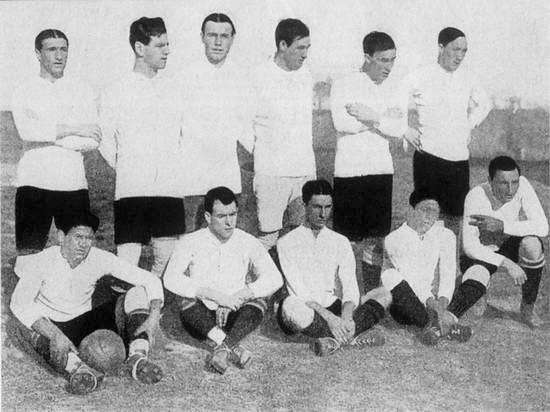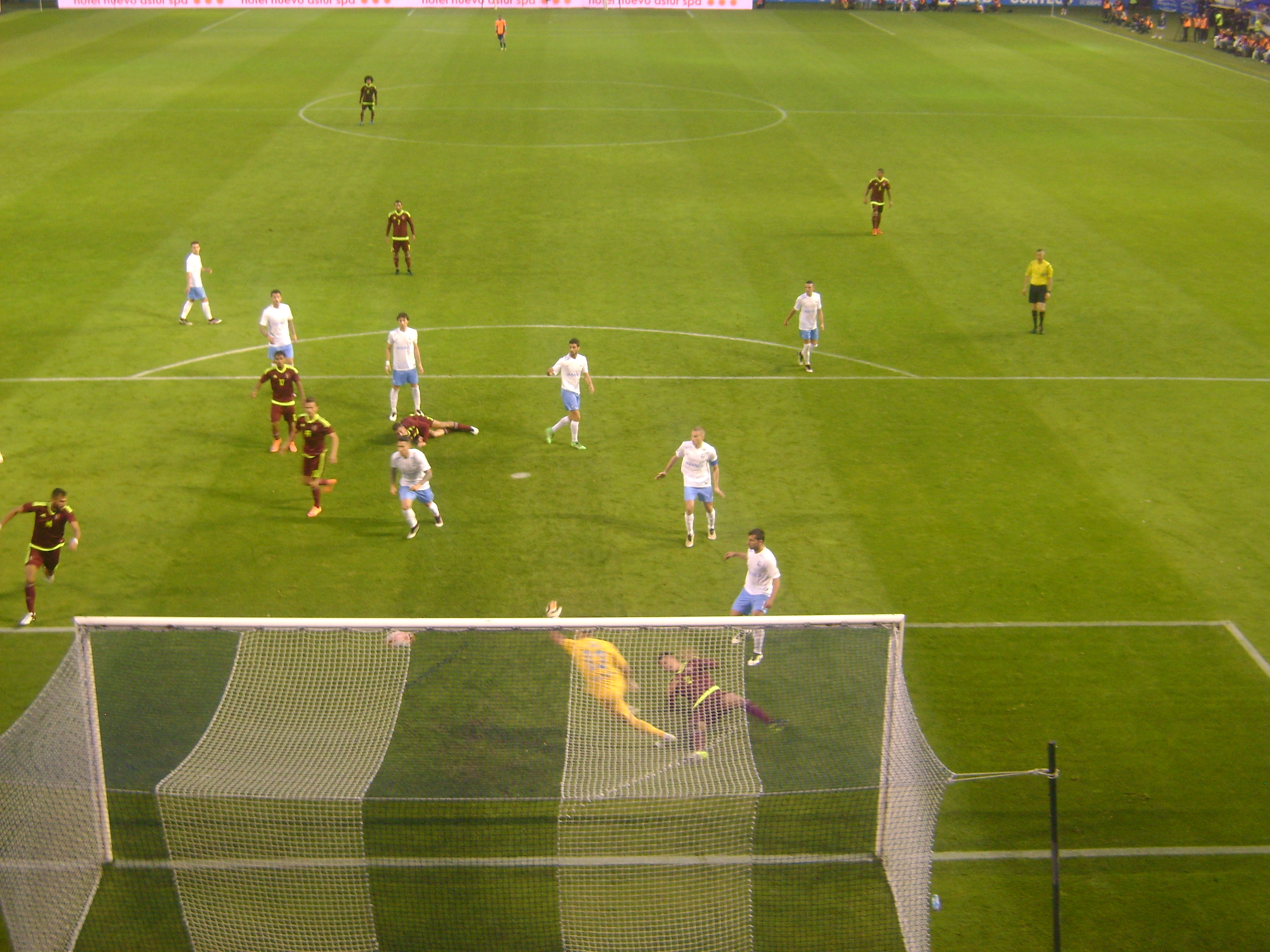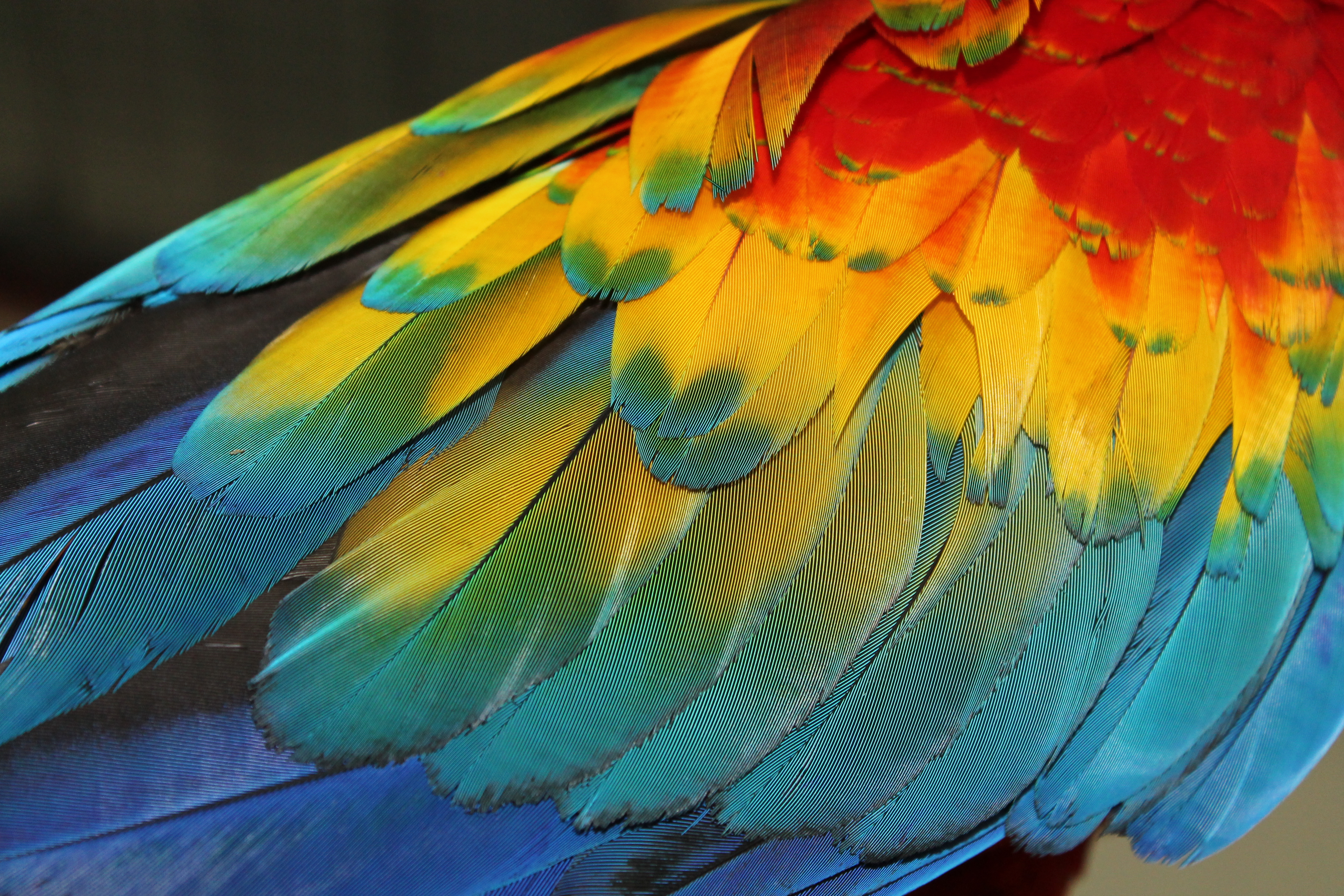|
List Of Copa América Official Mascots
Each Copa América since 1987 has its own mascot. ''Gardelito'', the mascot for the 1987 competition, was the first Copa América mascot. The mascot designs show some representing a characteristic feature (costume, flora, fauna, etc.) of the host country. The Copa América mascot is frequently one or more anthropomorphic characters targeted at children with cartoon shows and other merchandise released to coincide with the competition. List of mascots See also * List of FIFA World Cup official mascots * List of FIFA Women's World Cup official mascots * List of UEFA European Championship official mascots * List of Africa Cup of Nations official mascots * List of AFC Asian Cup official mascots Although it is the second oldest continental tournament after Copa América, the AFC Asian Cup didn't practice using mascots until near the end of 20th century when UEFA European Championship had begun to practice since 1980. This late catch up was ... References {{DEFAULTSORT:Cop ... [...More Info...] [...Related Items...] OR: [Wikipedia] [Google] [Baidu] |
Copa América
The Copa América ( en, America Cup) or CONMEBOL Copa América, known until 1975 as the South American Football Championship (''Campeonato Sudamericano de Fútbol'' in Spanish and ''Campeonato Sul-Americano de Futebol'' in Portuguese), is the top men's football tournament contested among national teams from South America. It is the oldest still-running continental football competition, as well as the third most watched in the world. The competition determines the champions of South America. Since the 1990s, teams from North America and Asia have also been invited to compete. Since 1993, the tournament has generally featured 12 teams—all 10 CONMEBOL teams and two additional teams from other confederations. Mexico participated in every tournament between 1993 and 2016, with one additional team drawn from CONCACAF, except for 1999, when AFC team Japan filled out the 12-team roster, and 2019, which featured Japan and Qatar. The 2016 version of the event, Copa América Cente ... [...More Info...] [...Related Items...] OR: [Wikipedia] [Google] [Baidu] |
Nine-banded Armadillo
The nine-banded armadillo (''Dasypus novemcinctus''), also known as the nine-banded long-nosed armadillo or common long-nosed armadillo, is a mammal found in North, Central, and South America, making it the most widespread of the armadillos. Its ancestors originated in South America, and remained there until the formation of the Isthmus of Panama allowed them to enter North America as part of the Great American Interchange. The nine-banded armadillo is a solitary, mainly nocturnalArmadillo Observation Msu.edu. Retrieved on October 17, 2013. Ksr.ku.edu. Retrieved on October 17, 2013. animal, found in many kinds of habitats, from mature and second ... [...More Info...] [...Related Items...] OR: [Wikipedia] [Google] [Baidu] |
Venezuela National Football Team
The Venezuela national football team ( es, Selección de fútbol de Venezuela) represents Venezuela in men's international football and is controlled by the Venezuelan Football Federation (FVF), the governing body for football in Venezuela. They are nicknamed ''La Vinotinto'' ("Red wine") because of the traditional burgundy color of their shirts. When playing at home in official games, they usually rotate between three stadiums: The Polideportivo Cachamay in Puerto Ordaz, the Estadio José Antonio Anzoátegui in Puerto La Cruz and the Estadio Pueblo Nuevo in San Cristóbal. In friendly matches, they tend to rotate between the rest of the stadiums in the country. Unlike other South American nations, and akin to some Caribbean nations, baseball is extremely popular in Venezuela, which diverts athletic talent away from football, contributing to its historic lack of success in CONMEBOL competitions. As of 2022, they are the only CONMEBOL side to have never qualified for the FIFA ... [...More Info...] [...Related Items...] OR: [Wikipedia] [Google] [Baidu] |
Scarlet Macaw
The scarlet macaw (''Ara macao'') is a large red, yellow, and blue Central and South American parrot, a member of a large group of Neotropical parrots called macaws. It is native to humid evergreen forests of the Neotropics. Its range extends from south-eastern Mexico to Peru, Ecuador, Colombia, Bolivia, Venezuela and Brazil in lowlands of (at least formerly) up to , the Caribbean island of Trinidad, as well as the Pacific island of Coiba. Formerly, it ranged north to southern Tamaulipas. In some areas, it has suffered local extinction because of habitat destruction, or capture for the parrot trade, but in other areas, it remains fairly common. It is the national bird of Honduras. Like its relative the blue-and-yellow macaw, the scarlet macaw is a popular bird in aviculture as a result of its striking plumage. Taxonomy The scarlet macaw was formally described by the Swedish naturalist Carl Linnaeus in 1758 in the tenth edition of his ''Systema Naturae'' under the binomial name ' ... [...More Info...] [...Related Items...] OR: [Wikipedia] [Google] [Baidu] |
Guaky On His Tour Of ((Venezuela))
Guaky was the official mascot of the 2007 Copa América in Venezuela. The bird wears the Venezuela national football team's burgundy shirt and was accompanied by his ball, with "Venezuela 2007" printed on his chest. Description Guaky is a scarlet macaw, a bird representative of Venezuela. He wears the burgundy traditional jersey of the Venezuela national football team The Venezuela national football team ( es, Selección de fútbol de Venezuela) represents Venezuela in men's international football and is controlled by the Venezuelan Football Federation (FVF), the governing body for football in Venezuela. T ... and football boots. Under his wings is the characteristic tricolor national flag, with its eight stars on his wings. To choose the official mascot, a contest was held, which was entered by 4.5 million Venezuelan children. The winning entry came from 15-year-old Jhoyling Zabaleta. The final design was commissioned by Fractal Studio, who gave it a "strong, cheerful ... [...More Info...] [...Related Items...] OR: [Wikipedia] [Google] [Baidu] |
Guaky
Guaky was the official mascot of the 2007 Copa América in Venezuela. The bird wears the Venezuela national football team's burgundy shirt and was accompanied by his ball, with "Venezuela 2007" printed on his chest. Description Guaky is a scarlet macaw, a bird representative of Venezuela. He wears the burgundy traditional jersey of the Venezuela national football team and football boots. Under his wings is the characteristic tricolor national flag A national flag is a flag that represents and symbolizes a given nation. It is flown by the government of that nation, but usually can also be flown by its citizens. A national flag is typically designed with specific meanings for its colours ..., with its eight stars on his wings. To choose the official mascot, a contest was held, which was entered by 4.5 million Venezuelan children. The winning entry came from 15-year-old Jhoyling Zabaleta. The final design was commissioned by Fractal Studio, who gave it a "strong, cheerfu ... [...More Info...] [...Related Items...] OR: [Wikipedia] [Google] [Baidu] |
2007 Copa América
The 2007 Campeonato Sudamericano Copa América, known simply as the 2007 Copa América or 2007 Copa América Venezuela, was the 42nd edition of the Copa América, the South-American championship for international association football teams. The competition was organized by CONMEBOL, South America's football governing body, and was held between 26 June and 15 July in Venezuela, which hosted the tournament for the first time. The competition was won by Brazil (they were also the defending champions), who beat Argentina 3–0 in the final. Mexico took third place by beating Uruguay 3–1 in the third-place match. Brazil thus won the right to represent CONMEBOL at the 2009 FIFA Confederations Cup. Competing nations As with previous tournaments, all ten members of CONMEBOL participated in the competition. In order to bring the number of competing teams to twelve, CONMEBOL invited Mexico and the United States, the two highest ranking CONCACAF teams in the FIFA World Rankings. Just a ... [...More Info...] [...Related Items...] OR: [Wikipedia] [Google] [Baidu] |
Inca
The Inca Empire (also known as the Incan Empire and the Inka Empire), called ''Tawantinsuyu'' by its subjects, (Quechua for the "Realm of the Four Parts", "four parts together" ) was the largest empire in pre-Columbian America. The administrative, political and military center of the empire was in the city of Cusco. The Inca civilization arose from the Peruvian highlands sometime in the early 13th century. The Spanish began the conquest of the Inca Empire in 1532 and by 1572, the last Inca state was fully conquered. From 1438 to 1533, the Incas incorporated a large portion of western South America, centered on the Andean Mountains, using conquest and peaceful assimilation, among other methods. At its largest, the empire joined modern-day Peru, what are now western Ecuador, western and south central Bolivia, northwest Argentina, the southwesternmost tip of Colombia and a large portion of modern-day Chile, and into a state comparable to the historical empires of Eurasia ... [...More Info...] [...Related Items...] OR: [Wikipedia] [Google] [Baidu] |
Chasqui
The ''chasquis'' (also ) were the messengers of the Inca empire. Agile, highly trained and physically fit, they were in charge of carrying the , messages and gifts, up to 240 km per day through the relay system. ''Chasquis'' were not just messengers (those were young boys who were just used to pass along basic information); the were trained to be able to read and translate the to each other and higher authorities. Not only were they used to transport oral messages, but they also helped the inspector general, the Sapa Inka's brother, keep track of the people in the empire. Chasquis were chosen from the fittest young males and were known to be the fastest runners. Operation ''Chasquis'' were dispatched along thousands of kilometres, taking advantage of the vast Inca system of purpose-built roads and rope bridges in the Andes of Peru and Ecuador. On the coast of what is now Peru their route ran from Nazca to Tumbes. ''Chasqui'' routes also extended into further reaches of th ... [...More Info...] [...Related Items...] OR: [Wikipedia] [Google] [Baidu] |
2004 Copa América
The 2004 Copa América was the 41st edition of the Copa América, the South-American championship for international association football teams. The competition was organized by CONMEBOL, South America's football governing body, and was held in Peru, who hosted the tournament for the sixth time, from 6 to 25 July. The tournament was won by Brazil national football team, Brazil in a shootout over Argentina national football team, Argentina. This made Brazil hold the FIFA World Cup, World Cup and Copa América titles simultaneously for the second time in history, as happened after 1997 Copa América. There is no qualifying tournament for the final tournament. CONMEBOL's 10 South American countries participated, along with two more invited countries, making a total of twelve teams competing in the tournament. The two invited countries for this edition of the Copa América were Mexico national football team, Mexico and Costa Rica national football team, Costa Rica. Venues Squads ... [...More Info...] [...Related Items...] OR: [Wikipedia] [Google] [Baidu] |
Flag Of Colombia
The national flag of Colombia symbolises Colombian independence from Spain, gained on 20 July 1810. It is a horizontal tricolor of yellow, blue and red. The yellow stripe takes up a half of the flag and the blue and red take up a quarter of the space each. Symbolism and design The horizontal stripes (from top to bottom) of yellow, blue and red tricolor have a ratio of 2:1:1. It—together with that of Ecuador, also derived from the flag of Gran Colombia—is different from most other tricolor flags, either vertical or horizontal, in having stripes which are not equal in size. (Venezuela, whose flag is also derived from the same source, opted for a more conventional tricolor with equal stripes). The official colors have not yet been established by law. The Colombian Olympic Committee approved the following colors for the London 2012 Summer Olympics: According to the current interpretation, the colors signify: * * * The flag's colors have other representations, such ... [...More Info...] [...Related Items...] OR: [Wikipedia] [Google] [Baidu] |
2001 Copa América
The 2001 Copa América was held in Colombia, from 11 to 29 July. It was organised by CONMEBOL, South America's football governing body. Colombia won the tournament for the 1st time without conceding a goal. Brazil national football team, Brazil were the defending champions who were knocked out from the tournament by Honduras national football team, Honduras after suffering a 0–2 defeat in the quarter-final. There is no qualifying for the final tournament. CONMEBOL's ten South American countries participate, along with two more invited countries, making a total of twelve teams competing in the tournament. Originally, Mexico national football team, Mexico and CONCACAF 2000 CONCACAF Gold Cup, Champions Canada men's national soccer team, Canada were invited. Prior to the tournament, three meetings were held by CONMEBOL authorities who were concerned about potential security issues in Colombia. On 1 July they announced the cancellation of the tournament. Venezuela offered to host t ... [...More Info...] [...Related Items...] OR: [Wikipedia] [Google] [Baidu] |
)._2007.jpg)







._Chasqui.jpg)

